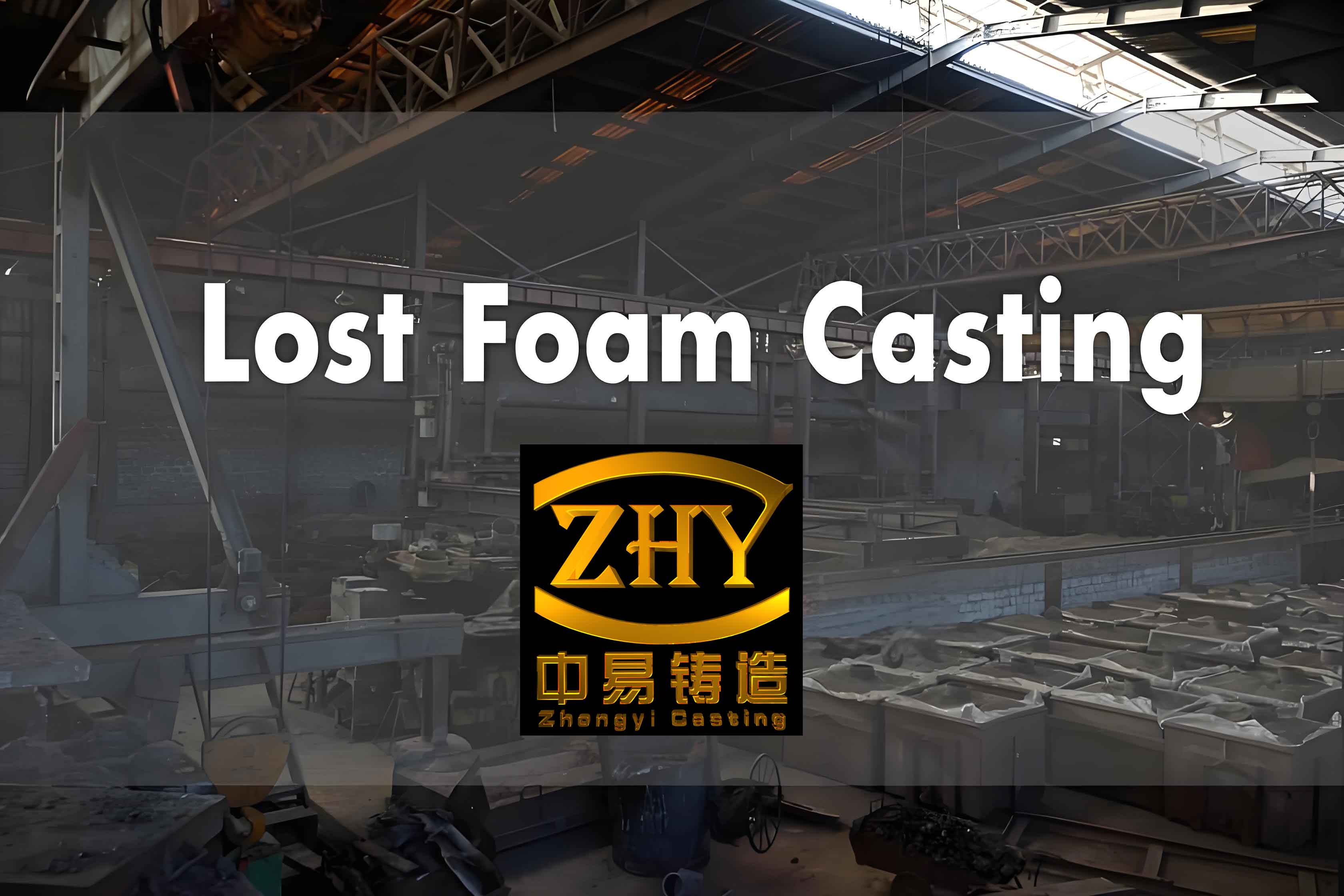
1. Introduction
As a casting engineer specializing in lost foam casting, I have encountered numerous challenges in producing high-quality ductile iron casting. The inherent complexity of ductile iron casting’s solidification behavior—characterized by mushy solidification and graphite expansion—often leads to defects such as shrinkage porosity, shrinkage cavities, and slag inclusion. This article details my team’s systematic approach to optimizing the lost foam casting process for a 180 kg ductile iron casting component with thick sections and long oil passages (>500 mm). Through simulation, experimentation, and process refinement, we achieved significant improvements in defect prevention and casting yield.
2. Process Design for Lost Foam Casting
2.1 Component Analysis
The casting, made of QT400-15 ductile iron casting, measures 430 mm × 620 mm × 684 mm and features localized thick sections (e.g., 183 mm × 40 mm × 59 mm). Key challenges included:
- Thermal Hotspots: Thick regions prone to shrinkage defects.
- Oil Passages: Two internal channels requiring airtightness and defect-free surfaces.
2.2 Gating System Design
Four gating systems were evaluated using MACMA simulation software:
| Gating System | Description | Simulation Findings |
|---|---|---|
| Side Bottom | Metal enters from the side and bottom | High shrinkage risk in “U”-shaped protrusions and upper face intersections. |
| Top Gating | Metal pours from the top | Similar risks as side bottom; poor feeding capacity for thick sections. |
| Step Gating | Multi-level entry points | Shrinkage concentrated in parallel plates and upper face; insufficient feeding post-gate solidification. |
| Bottom Gating | Metal fills from the bottom upward | Reduced shrinkage risk due to directional solidification; enhanced feeding efficiency. |
Conclusion: Bottom gating with optimized feeders showed the highest potential for defect mitigation.
3. Defect Analysis and Root Causes
3.1 Major Defects Observed
- Shrinkage Cavities: Concentrated at the upper face and thick sections.
- Slag Inclusions: Trapped impurities due to turbulent filling.
3.2 Root Cause Analysis
Shrinkage Porosity:
- Mushy Solidification: ductile iron casting lacks a solidified shell early in cooling, leading to uneven contraction.
- Graphite Expansion: While graphite expansion compensates for shrinkage, late-stage contraction in isolated regions exacerbates porosity.
Key Factors:
- Inadequate feeder size and placement.
- Insufficient mold rigidity to withstand graphite expansion pressure.
4. Improvement Strategies
4.1 Feeder Design Optimization
Feeders were redesigned based on modulus calculations:
- Modulus Definitions:
- MsMs: Modulus of the thermal hotspot.
- MRMR: Modulus of the feeder.
- MvMv: Modulus of the feeder neck.
| Feeder Type | Design Parameters | Outcome |
|---|---|---|
| Feeder 1# | MR=MsMR=Ms, Mv=0.8MRMv=0.8MR | 37% rejection rate due to residual shrinkage in hotspots. |
| Feeder 2# | MR=1.5MsMR=1.5Ms, Mv=0.6MRMv=0.6MR | <5% rejection; minor surface defects removed during machining. |
Conclusion: Oversized feeders (MR=1.5MsMR=1.5Ms) provided adequate feeding capacity.
4.2 Process Enhancements
- Mold Rigidity: Increased sand compaction and extended pressure holding (>15 min post-pouring).
- Coating Control: Optimized drying parameters to prevent gas entrapment.
- Pouring Parameters: Adjusted vacuum levels and pouring temperature to minimize turbulence.
5. Validation and Results
5.1 Experimental Validation
- Phase 1: Baseline trials with Feeder 1# and bottom gating resulted in 37% scrap due to shrinkage.
- Phase 2: Feeder 2# with enhanced process controls achieved:
- Zero shrinkage in critical sections.
- Surface defects within acceptable machining allowances.
5.2 Quality Metrics
| Parameter | Before Improvement | After Improvement |
|---|---|---|
| Rejection Rate | 37% | <5% |
| Machining Yield | 63% | 95% |
| Leak Test Pass Rate | 78% | 98% |
6. Best Practices for Lost Foam Casting of Ductile Iron Casting
- Gating Design: Prioritize bottom gating to promote directional solidification.
- Feeder Sizing: Use MR=1.5MsMR=1.5Ms for robust feeding.
- Process Controls:
- Maintain consistent vacuum (-0.04 to -0.06 MPa).
- Ensure mold rigidity through high sand compaction.
- Implement post-pouring pressure holding.
7. Conclusion
Through systematic simulation and experimentation, we demonstrated that lost foam casting of ductile iron casting can achieve high yields by integrating bottom gating, oversized feeders, and rigorous process controls. This approach not only mitigates shrinkage defects but also enhances the economic viability of ductile iron casting components in demanding applications.
